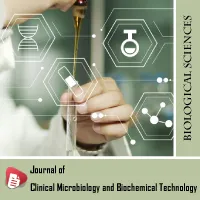Journal of Clinical Microbiology and Biochemical Technology
Magnetic hydrogel for the rapid elimination of environmental harmful ions
Yoshihisa Namiki*
Cite this as
Namiki Y (2020) Magnetic hydrogel for the rapid elimination of environmental harmful ions. J Clin Microbiol Biochem Technol 6(1): 039-040. DOI: 10.17352/jcmbt.000042We have newly devised konjac glucomannan hydrogel pellets containing micrometer-sized iron particles and hydrotalcite powder [1], by which we can efficiently remove environmental harmful ions such as selenium, boron, fluorine and arsenic. Glucomannan hydrogel forms three-dimensional network which can stably immobilize these materials Figure 1. Iron Magnetic hydrogel (Japanese Patent 6667880 (2019)).
Compared with larger size of hydrotalcite particles, smaller size of hydrotalcite particles can efficiently adsorb larger amount of selenium, boron and fluorine in a shorter time, but it is more difficult to collect them. If these fine adsorbents are magnetically attracted, we can rapidly and easily remove harmful ion from wastewater.
Iron oxide is generally used as magnetic materials because of its high resistance of corrosion however its high cost is disadvantage [2-6]. In contrast, iron is low cost ferromagnetic material which can adsorb selenium and arsenic, but iron is easy to rust and to lose magnetism. The alkaline chemical environment is known to form a passivating film on the surface of iron materials, for examples, this film can prevent the corrosion of reinforcement steel bars in concrete [7]. By using hydrotalcite-containing alkaline hydrogel, we could prevent the corrosion of iron particles.
Toxicity of selenium, fluorine, boron and arsenic is as follows. Selenosis induces gastrointestinal disorders, hair loss, sloughing of nails, fatigue, irritability, neurological damage, liver cirrhosis and pulmonary edema [8]. Fluorosis causes white spots of teeth surface, joint pain, alteration of bone structure, calcification of ligaments, nausea, diarrhea, vomiting and abdominal pain [9]. Boron is mainly toxic to plants, and plants with too much boron display yellowing or browning of foliage [10]. Long-term exposure to arsenic lead to cancer, diabetes, heart disease and neurotoxicity [11].
Aqueous solution containing selenium (1 mg/mL), boron (3 mg/mL), fluorine (3 mg/mL), and arsenic (1 mg/mL), and magnetic hydrogel (15 w/w%) was mixed. After 24 hours of mixing, magnetic hydrogel was removed using magnet (0.5 tesla) for 20 seconds, we measured the concentration of selenium, boron, fluorine and arsenic. The average concentration of them was 0.009 mg/mL, 0.07 mg/mL, 0.10 mg/mL and 0.004 mg/mL, respectively. Finally, we confirmed that the magnetic hydrogel was useful for rapid, easy and simultaneous removal of these harmful ions Figure 2.
This work was supported by Program for Promotion of New Product & Technology Development (Funabashi city, Japan (2020)).
- Namiki Y (2019) Magnetic hydrogel. Japanese Patent 6667880.
- Namiki Y, Ueyama T, Yoshida T, Watanabe R, Namiki T, et al. (2014) Hybrid micro-particles as a magnetically-guidable decontamination for cesium-eluted ash slurry. Sci Rep 4: e6294. Link: https://go.nature.com/3h8fyxl
- Namiki Y (2013) Synthesis of lipidic magnetic nanoparticles for nucleic acid delivery. Method Mol Biol 243-250. Link: https://bit.ly/359u4T7
- Namiki Y, Namiki T, Ishii Y, Koido S, Nagase Y, et al. (2012) Inorganic-organic magnetic nanocomposites for use in preventive medicine: a rapid and reliable elimination system for cesium. Pharm Res 29: 1404-1418. Link: https://bit.ly/2F78QKB
- Namiki Y, Fuchigami T, Tada N, Kawamura R, Matsunuma, et al. (2011) Nanomedicine for cancer: lipid-based nanostructures for drug delivery and monitoring. Acc Chem Res 44: 1080-1093. Link: https://bit.ly/3m0yUb6
- Namiki Y, Namiki T, Yoshida H, Ishii Y, Tada N, et al. (2009) A novel magnetic crystal-lipid nanostructure for magnetically guided in vivo gene delivery. Nature Nanotechnology 4: 598-606. Link: https://go.nature.com/3h8fHRp
- Reinforced concrete. Link: https://bit.ly/3h8lh64
- Selenium. Link: https://bit.ly/2GvXRLm
- What Is Fluoride, and Is It Safe?. Link: https://bit.ly/333VNSC
- Boron. Link: https://bit.ly/338ixRp
- Everything You Need to Know About Arsenic Poisoning. Link: https://bit.ly/2DztQZY

Article Alerts
Subscribe to our articles alerts and stay tuned.
 This work is licensed under a Creative Commons Attribution 4.0 International License.
This work is licensed under a Creative Commons Attribution 4.0 International License.


 Save to Mendeley
Save to Mendeley
